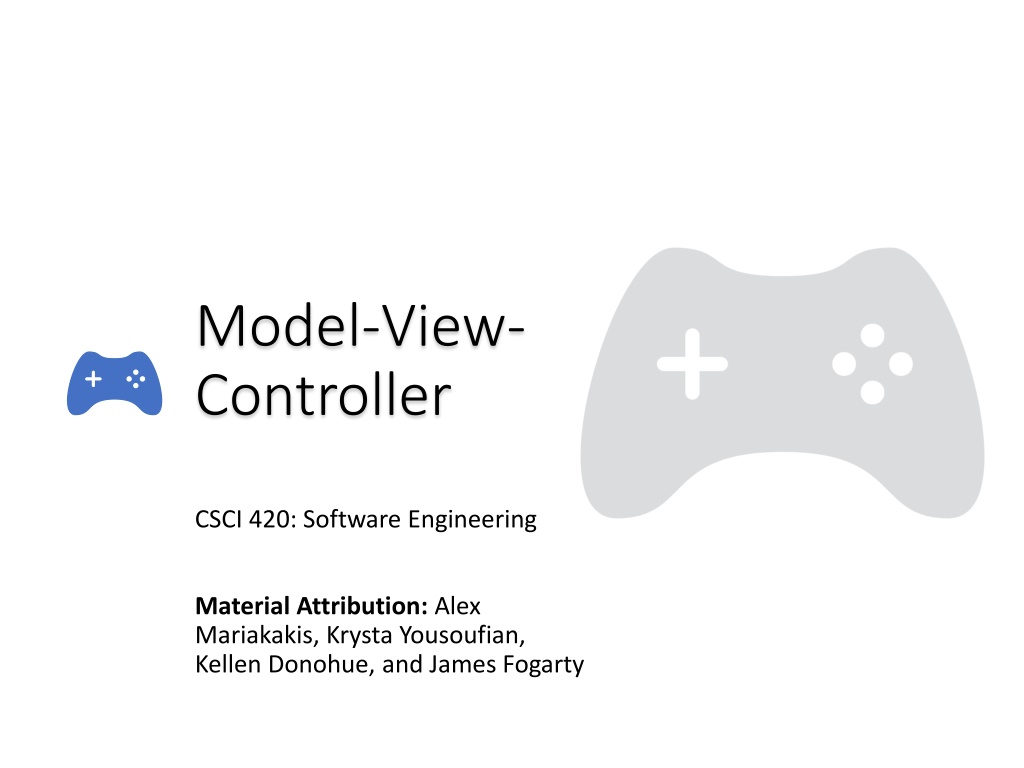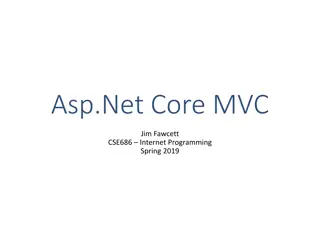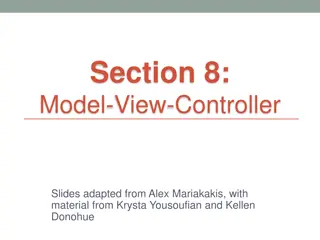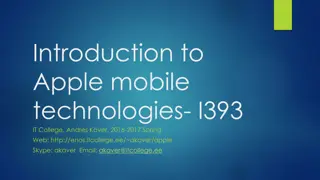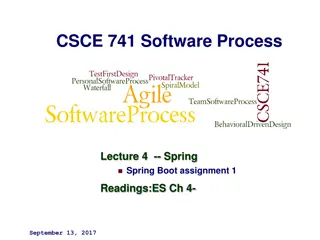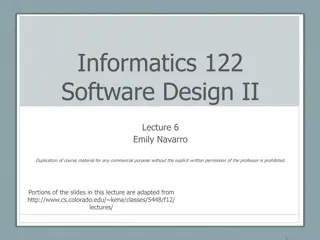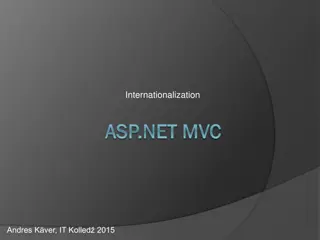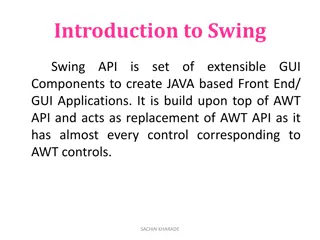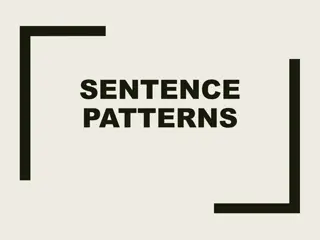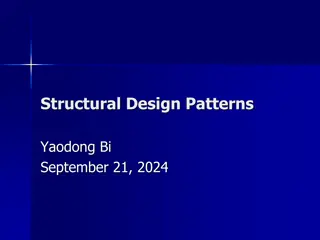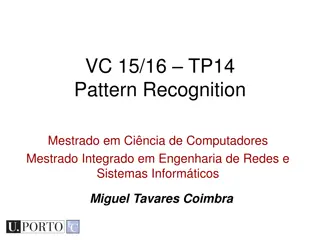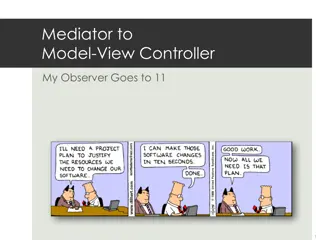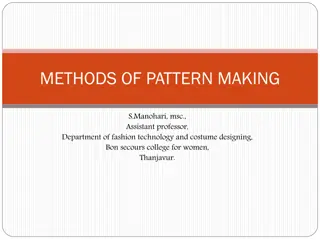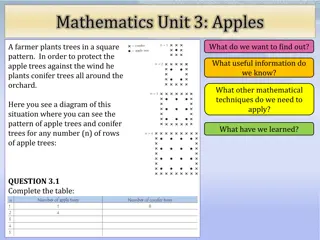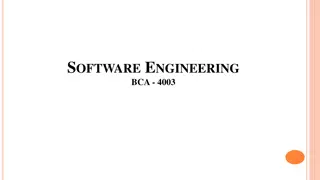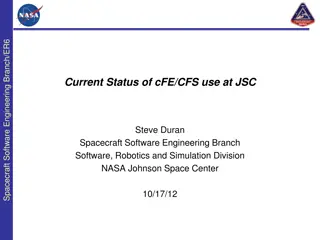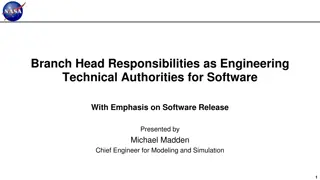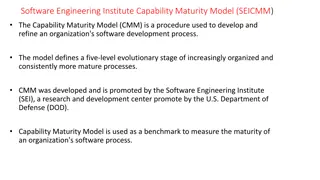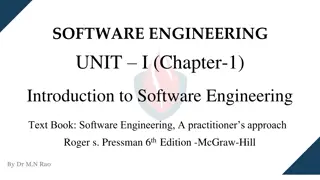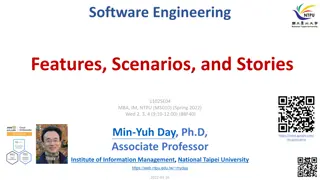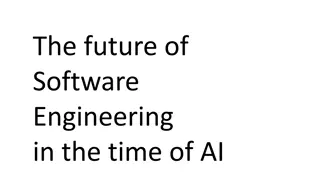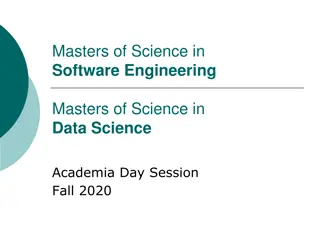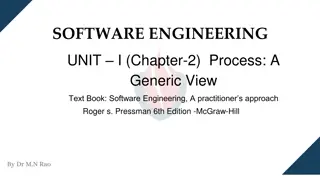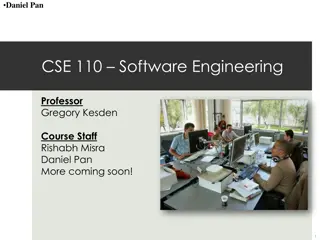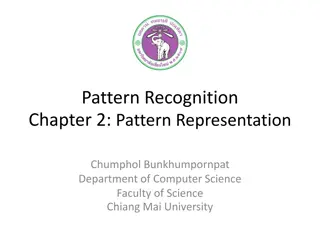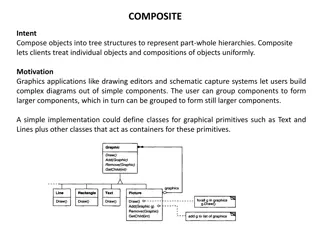Understanding MVC Pattern in Software Engineering
MVC (Model-View-Controller) is a classic design pattern used in software engineering to manage data-driven user applications. It separates the application into three interconnected components - Model, View, and Controller. Each component has specific tasks to handle, leading to organized code, ease of development, flexibility, and maintainability. The flow of MVC in theory and practice emphasizes the independence of tasks, making it efficient for building and testing components independently.
Download Presentation

Please find below an Image/Link to download the presentation.
The content on the website is provided AS IS for your information and personal use only. It may not be sold, licensed, or shared on other websites without obtaining consent from the author. Download presentation by click this link. If you encounter any issues during the download, it is possible that the publisher has removed the file from their server.
E N D
Presentation Transcript
Model-View- Controller CSCI 420: Software Engineering Material Attribution: Alex Mariakakis, Krysta Yousoufian, Kellen Donohue, and James Fogarty
MVC The classic design pattern Used for data-driven user applications Such apps juggle several tasks: Loading and storing the data getting it in/out of storage on request Constructing the user interface what the user sees Interpreting user actions deciding whether to modify the UI or data These tasks are largely independent of each other Model, view, and controller each get one task
Model talks to data source to retrieve and store data Which database table is the requested data stored in? What SQL query will get me the data I need?
View asks model for data and presents it in a user-friendly format Would this text look better blue or red? In the bottom corner or front and center? Should these items go in a dropdown list or radio buttons?
Controller listens for the user to change data or state in the UI, notifying the model or view accordingly The user just clicked the hide details button. I better tell the view. The user just changed the event details. I better let the model know to update the data.
Benefits of MVC Organization of code Ease of development Flexibility Maintainable, easy to find what you need Build and test components independently Swap out views for different presentations of the same data (ex: calendar daily, weekly, or monthly view) Swap out models to change data storage without affecting user
MVC Flow in Theory View Model Controller
MVC Flow In theory In practice Pattern of behavior in response to inputs (controller) are independent of visual geometry (view) View and controller are so intertwined that they almost always occur in matched pairs (ex: command line interface) Controller contacts view to interpret what input events should mean in the context of the view Many architectures combine the two
MVC Flow in Practice View Model Controller
Push vs. Pull View Model Controller
Push vs. Pull Architecture Push architecture As soon as the model changes, it notifies all of the views Pull architecture When a view needs to be updated, it asks the model for new data
Push vs. Pull Architecture Advantages for push Guaranteed to have latest data in case something goes wrong later on Advantages for pull Avoid unnecessary updates, not nearly as intensive on the view
Traffic Signal MVC Component Model View Controller Detect cars waiting to enter intersection Traffic lights to direct car traffic Regulate valid traffic movements Manual override for particular lights Detect pedestrians waiting to cross Pedestrian signals to direct pedestrians External timer which triggers changes at set interval
Traffic Signal MVC Component Model View Controller Detect cars waiting to enter intersection X Traffic lights to direct car traffic X Regulate valid traffic movements X Manual override for particular lights X Detect pedestrians waiting to cross X Pedestrian signals to direct pedestrians X External timer which triggers changes at set interval X
Traffic Signal Model Stores current state of traffic flow Knows current direction of traffic Capable of skipping a light cycle Stores whether there are cars and/or pedestrians waiting View Conveys information to cars and pedestrians in a specific direction Controller Aware of model s current direction Triggers methods to notify model that state should change
Traffic Signal Code Model TrafficModel keeps track of which lights should be on and off View CarLight shows relevant state of TrafficModel to cars PedestrianLight shows relevant state of TrafficModel to pedestrians Controller PedestrianButton notifies TrafficModel that there is a pedestrian waiting CarDetector notifies TrafficModel that there is a car waiting LightSwitch enables or disables the light Timer regulates time in some way, possibly to skip cycles
